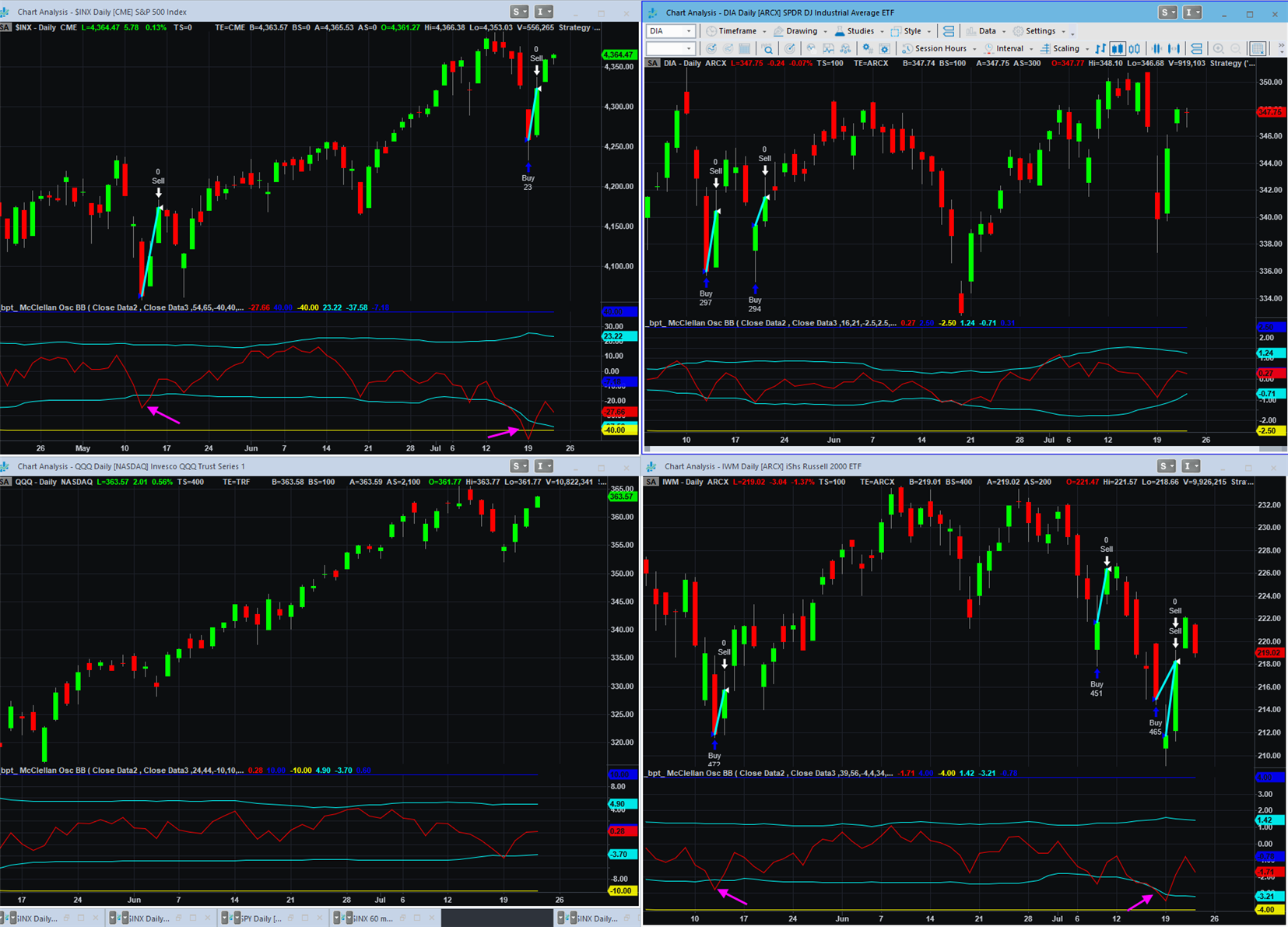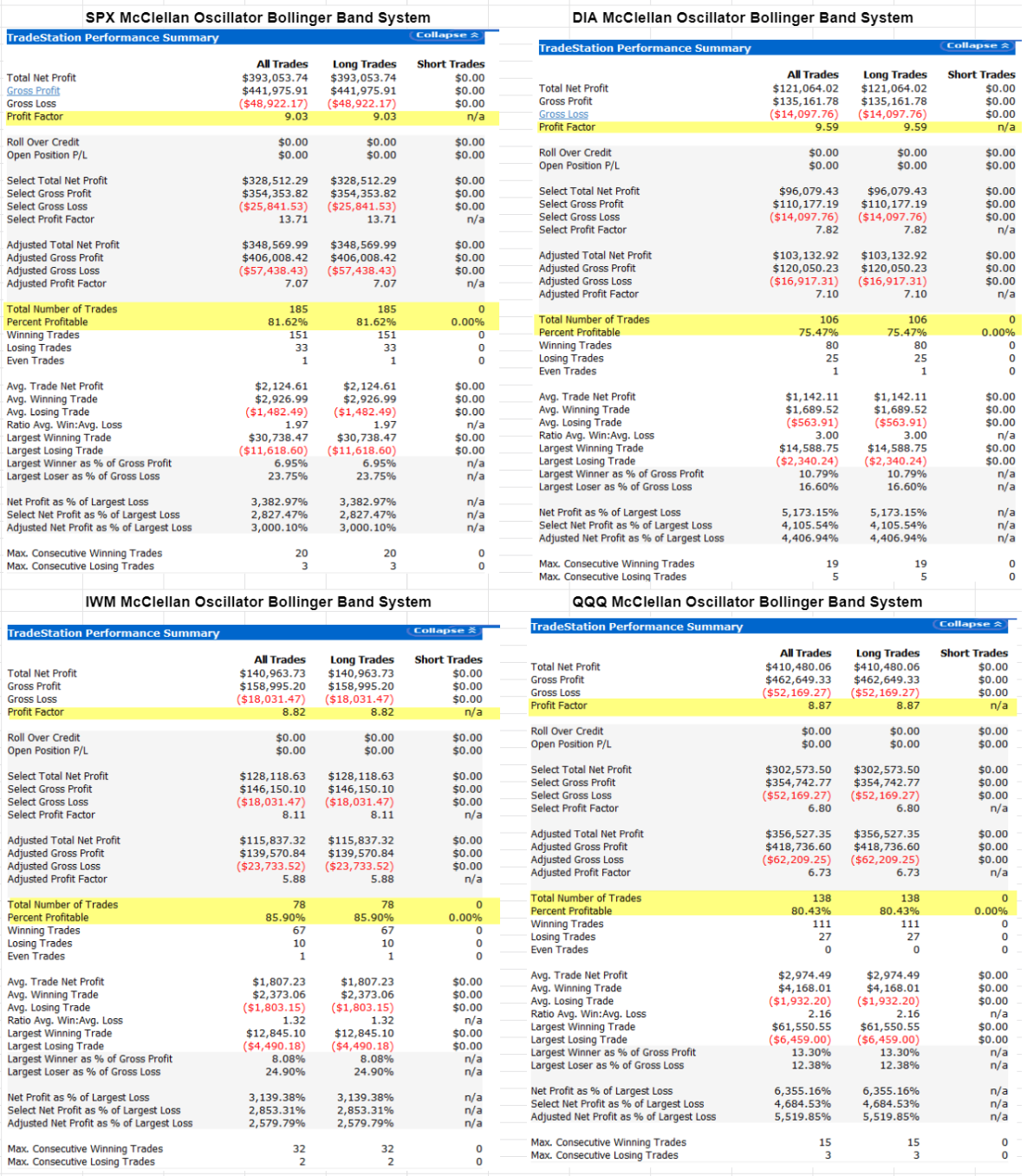Developed by Sherman and Marian McClellan, the McClellan Oscillator is a breadth indicator derived from Net Advances, which is the number of advancing issues less the number of declining issues. Subtracting the 39-day exponential moving average of Net Advances from the 19-day exponential moving average of Net Advances forms the oscillator. As the formula reveals, the McClellan Oscillator is a momentum indicator that works similar to MACD. McClellan Oscillator signals can be generated with breadth thrusts, centerline crossovers and divergences. CLICK HERE to read more about this indicator
At Breakpoint Trades we have used many variations of this the McClellan Oscillator in a variety of forms (Ratio adjusted, Summation, With Bollinger Bands etc) to show extreme oversold or overbought conditions and/or divergences in the market indexes.
An oversold system we've used for many years is the Ratio adjusted McClellan Oscillator along with a standard length 20:2 Bollinger Bands with our NYMO and NAMO charts. Whenever the McClellan Oscillator falls below the lower Bollinger Band, that signals an oversold condition where the market has high odds of experiencing at least a 1 day oversold bounce. In a strong sell off sometimes the McClellan Oscillator will close below its lower Bollinger Band for 2 or 3, and very rarely 4 consecutive trading days before a rally causes the indicator to close back inside its Bollinger Bands. These have proven over the years to be a pretty reliable reversion to the mean type of indicator/system.
Recently I was able to add these McClellan Oscillator indicators to my Tradestation charting platform where I have a variety of custom systems, such as our popular 22 SPY Pro systems. I have added this indicator in the form of advancing/declining issues for the SPX, the Nasdaq, Russell 2000, and the Dow Jones. The images below show the 4 major indexes with the McClellan Bollinger Band system and some recent trades along with the trade statistics of each.
As far as live Trade notifications to these systems, at this time I dot email real time official trade notifications to these systems nor do I keep a historical table of live trades like I currently do for the SPY systems. At this time whenever these systems do a trade I post it on the Trading Community Blog shortly after the market, and I will generally discuss in the newsletters. I may change this in the future and email them out, however I would like to eventually add more refinement to these systems. The statistics, while good are not as strong as the SPY systems.

